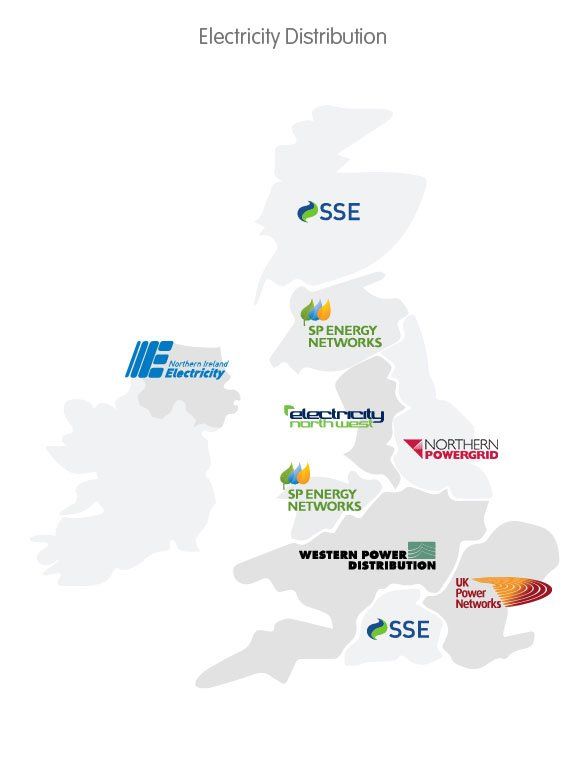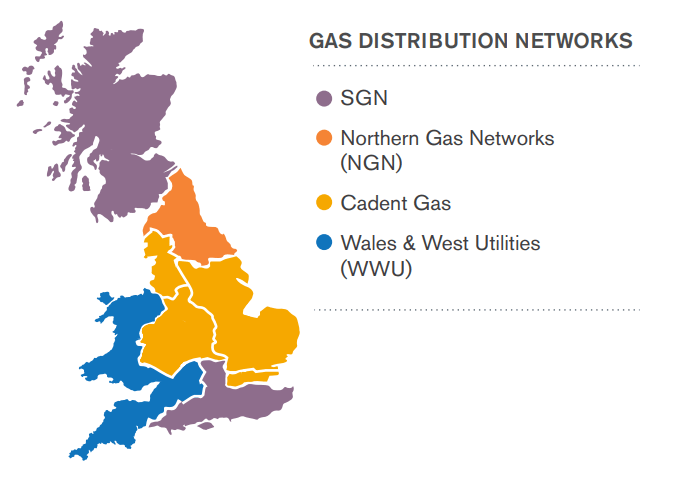What is the Energy Distribution Network and how does it work?
In this article, we look at the UK’s energy distribution network. Who operates within it and what role does the network play in keeping the nation’s lights on?
We’ve all heard of the energy supply companies , but the organisations responsible for generating, transmitting and distributing our power are relatively unknown by the public, even though they are responsible for operating the pylons and cables that bring power to homes and businesses across the UK.
The 4 parts of the Energy Distribution Network
Energy distribution companies are a part of the distribution network and known as network operators. This network is comprised of four different types of companies that include:
Generation companies
These manage, operate and own the UK’s power stations. They are responsible for the creation of the energy that we use daily. Companies such as Drax (the UK’s biggest renewable energy generator).
Transmission companies -
These companies manage the transmission network of high-voltage cables that bring power from the generators to the distribution network. In short, Transmission networks carry electricity long distances around the country at high voltages.
The organisation responsible for electricity transmission in England and Wales is the National Grid. It is responsible for balancing the system and ensuring that the supply of electricity meets the demand on a second-by-second basis.
Distribution companies –
These companies are responsible for delivering the power from the transmission networks to the nation’s homes, businesses and industries.
There are six companies or Distribution Network Operators (DNOs) across 14 districts that handle the distribution across the entirety of the country.
These are the companies that consumers need to contact in the event of any power outages as they are responsible for managing the cables, transformers, poles that comprise the distribution network.
Supply companies –
Energy supply companies suppliers buy the energy from the wholesale market and then sell it on to consumers.
They are the ones you’re probably most familiar with. Formally dominated by the ‘Big Six’ there has been a sharp increase in the number of challenger companies.
These smaller supply companies are taking a larger share of the market and regularly beat the big players when it comes to satisfied customers and service.
Gas Distribution Network
In the UK nearly half of our gas is imported from overseas via pipelines from Norway and Europe.
44% of the nation’s gas comes from under the North Sea and East Irish Sea with the remainder being imported as Liquified Natural Gas from the Middle East.
As with electricity, gas is transmitted across the country via a network of high-pressure pipes. Unlike with electricity, there is just one organisation tasked with overseeing the gas transmission network and that is the National Grid.
Like the electricity distribution networks, the gas distribution networks send gas along pipelines via the national transmission network to homes and businesses across the country.
There are seven gas distribution networks in the UK managed by 4 companies.
The GB electricity distribution network
According to Ofgem:
Electricity distribution networks deliver electricity from the high voltage transmission grid to industrial, commercial and domestic users.
There are 14 licensed distribution network operators (DNOs) in Great Britain and each is responsible for a regional distribution services area. The 14 DNOs are owned by six different groups.
In addition there are also a number of smaller networks owned and operated by Independent Network Operators (IDNOs). These are located within the areas covered by the DNOs
Since the DNOs are natural monopolies they are regulated by us to protect consumers from potential abuse of monopoly power.
In order to be able to distribute electricity through the network, DNOs and IDNOs must hold a licence. The licences contain conditions which, among other things, limit the amount of revenue which these companies can recover from their customers.
Further information on how the networks operate and where they are located can be found on the website of the Energy Networks Association.
Who regulates the network?
The body in charge of regulating the energy network is Ofgem that uses price controls to keep transmission and distribution companies in line regarding what they charge.
Ofgem also sets the companies within the network targets on things such as reliability, value and customer service.
If a company fails to maintain a high standard Ofgem has the power to punish them financially and via other means.
Ofgem does not regulate the prices charged by electricity generators but has introduced the price cap on suppliers.
Further Reading
Crazy Renewable Energy Ideas that just might work
How to start an Energy Supply Company
Dyball Associates are proud to help new supply businesses successfully launch in the UK market.
Through our energy market consultancy services, and the software we’ve developed, we’re supporting new UK electricity and gas suppliers get set up and start supplying.
For more information on how to start and manage an energy company, get in touch with Dyball Associates today.
Follow us on Twitter and LinkedIn to keep up to date with the latest news and updates in the energy industry.






